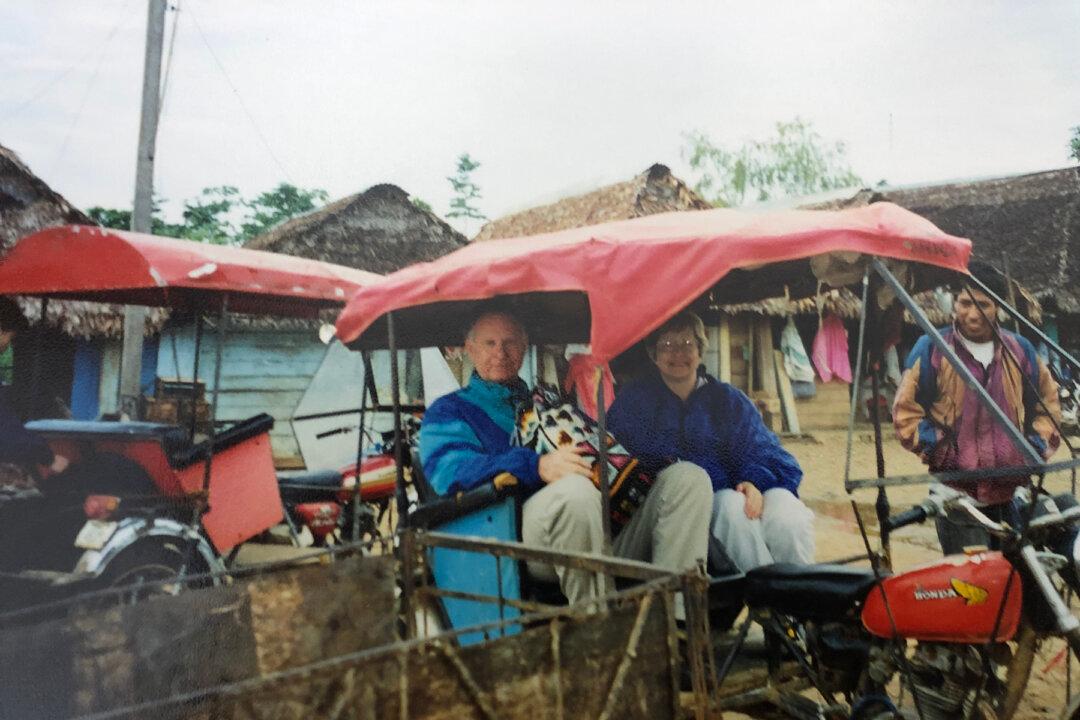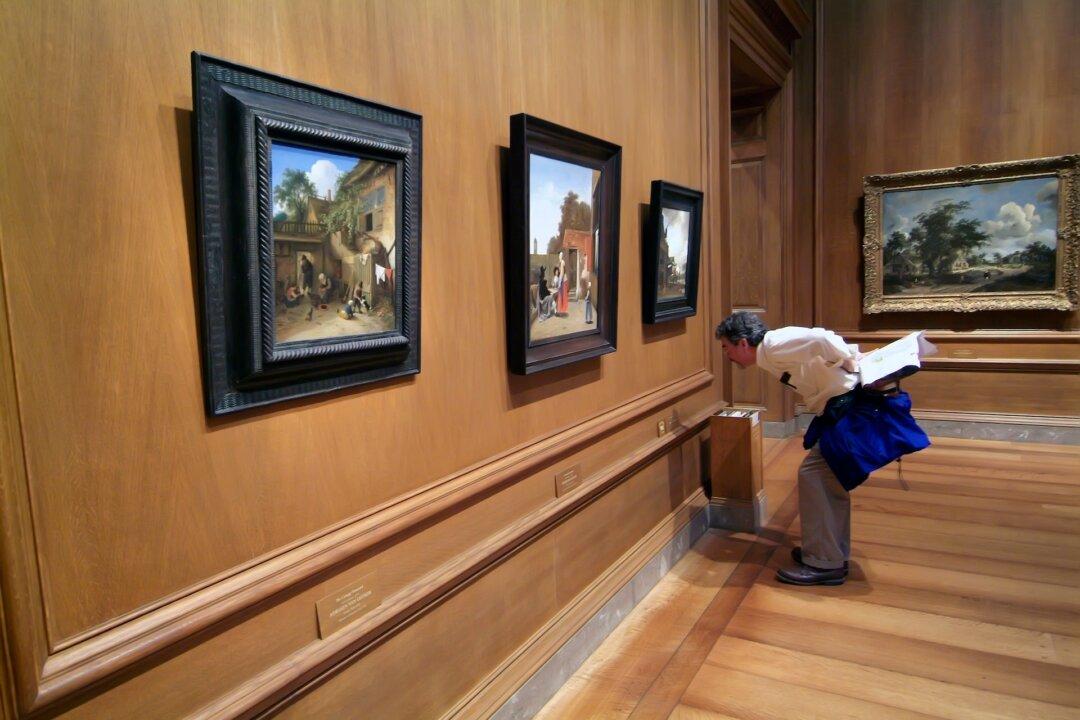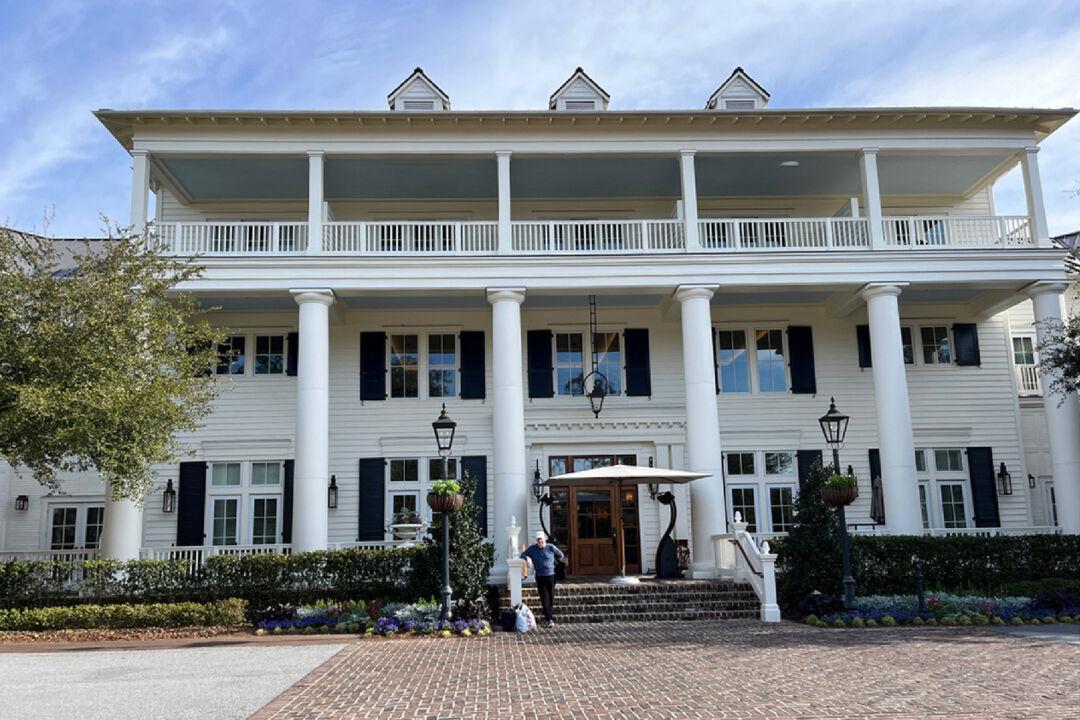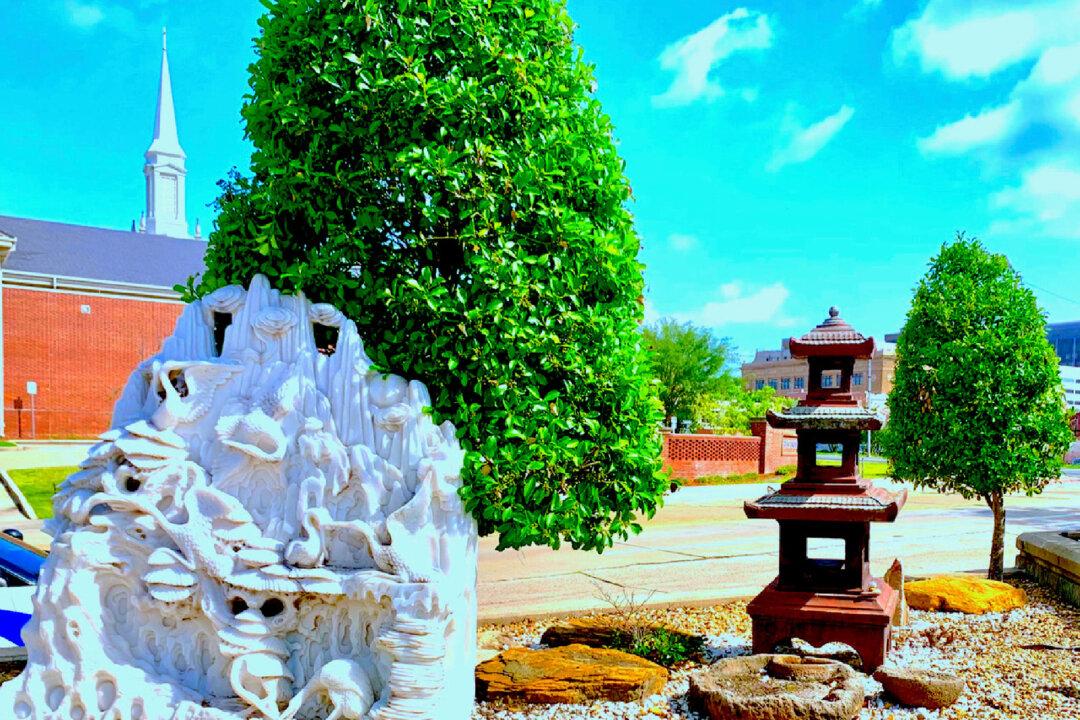After a week in Lima, Peru, we boarded a small jet to fly over the Andes. When we landed in the jungle town of Puerto Maldonado, our guide met us and threw our luggage into the back basket of a sort of motorcycle with places for two passengers behind him. We zoomed away toward what we thought would be a first-class ship for a four-hour cruise up the Tambopata River.
Five minutes later, the river’s swirling, muddy expanse came into view. It was wider than any we had ever crossed in the United States, lined on each side with dense jungle vegetation. The docks were a rough-hewn platform where we and 10 other travelers climbed into a large flat-bottomed canoe with 18 folding chairs lined up beneath a blue plastic tarp. This was our cruise ship.





